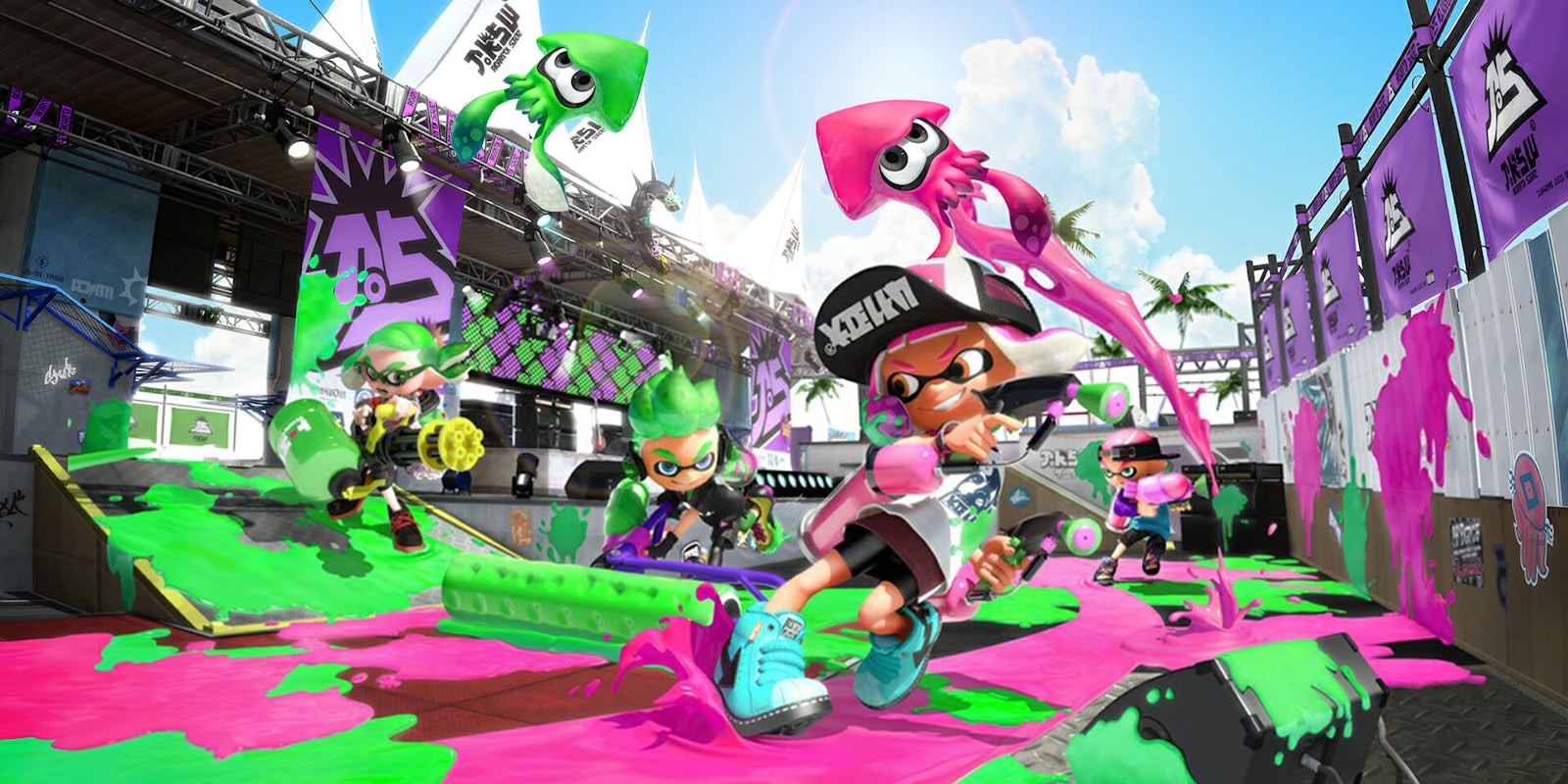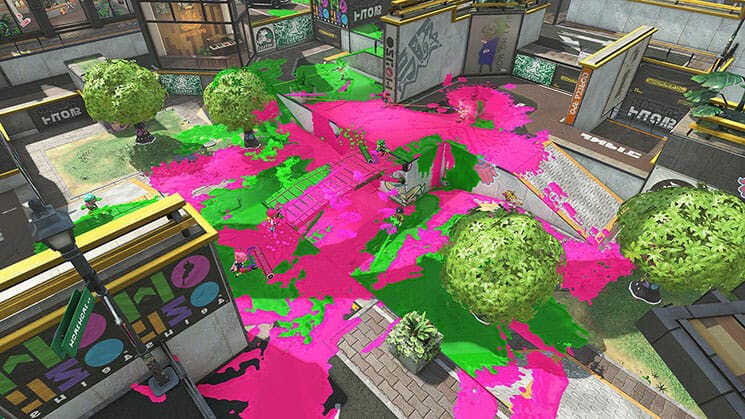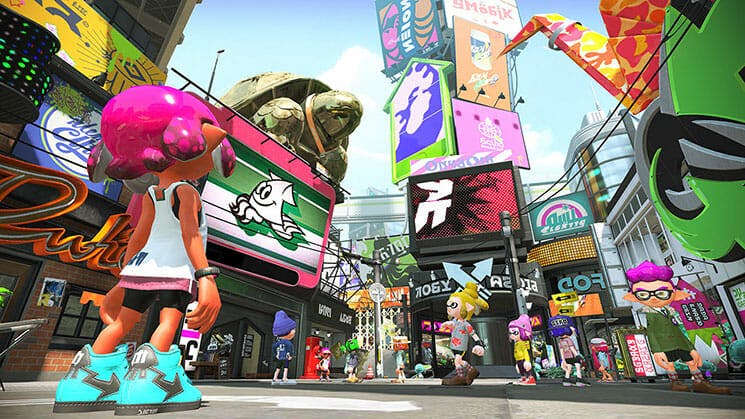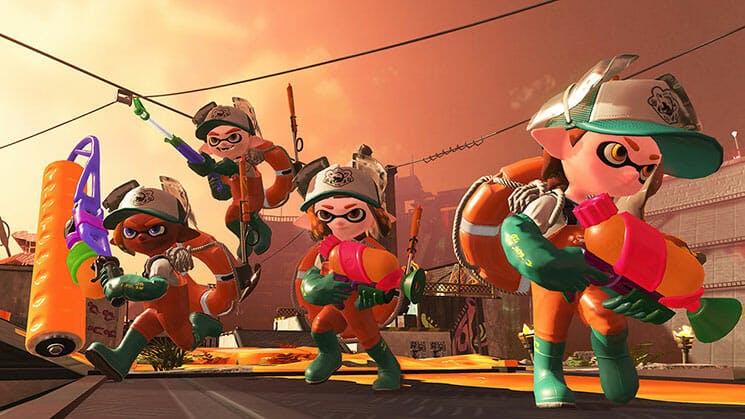Of the Wii U’s many overlooked games, few found as dedicated an audience as Splatoon. The multiplayer-focused experience kept players engaged for months after it launched with a lively, frequent rollout of meaningful content and interactive events. Players were able to form alliances, organize an arsenal, and tailor their own tactics in an objective-based competitive shooter that captured a bit of the same spirit what would make Overwatch a phenomenon the very next year.
For a brand new Nintendo property, Splatoon showed genuine creativity. The concept was original, the characters quirky, and the gameplay finely tuned to provide consistent fun in controlled bursts. Because matches in Splatoon were short, and the player’s goals were semi-removed from killing others, it showed for the first time that Nintendo was finally beginning to understand online gaming. Super Mario Maker and updates to Super Smash Bros and Mario Kart 8 pushed the Wii U into a better place with multiplayer interactions, but resembled less of a traditional experience than Splatoon.
This is why the sequel, announced in January, was so intriguing. Outside of that rabid fanbase, Splatoon had come and gone quickly, even if there were fantastic ideas held within.
Arriving on the Switch, Nintendo’s massively successful hybrid console, Splatoon 2 feels like the celebration the world of Inkopolis deserved back in 2015. After a full weekend of the community being online, the persevering problems have been made apparent, but barring some questionable connectivity, Splatoon 2 is an undeniable improvement on the first game’s achievements.
What will bring most players to the vibrant, youthful world are the 4-on-4 multiplayer matches. Two teams of energetic squid kids struggle back and forth to cover the map in their team’s colored paint, using a roster of weapons, and gear tuned to a number of different strategies. The strength of customization has been vastly improved, with multiple new shopkeepers to offer modifiers to everything from movement speed to ink capacity as well as building “special” attacks.
While this turf war is the key pillar of Splatoon‘s online play, the rest of the experience is built smartly around it. You enter a colorful lobby each time you load the game up, where everything you do is given context in the universe. Buying gear equates to visiting a local shop, updates on multiplayer map rotations are projected as televised entertainment, and the single-player focused content is tucked away in a corner, but just as accessible and expansive.
If there was an area where the first Splatoon desperately needed reinvention, the single-player campaign felt mostly like a proof-of-concept for the game’s quirky lore and mechanics, while serving as a tutorial for some of the more advanced mobility techniques. Most levels served as practice for swapping between a slow-moving shooter to a versatile squid, hidden in freshly splattered ink. Bosses put players to the test, but the brevity of the campaign made apparent the game’s main draw in online multiplayer.
Thankfully, Splatoon 2’s story mode is longer, but mostly inconsequential and falls into the same trap of levels that serve as a single lesson rather than building on a foundation. Your first time through, you’ll be restricted in your weapon choice, a strange limitation that flies in the face of the online experimentation for the sake of practice and familiarizing the player with all of their options.
While the four-to-five hour offline experience might be slightly underwhelming, Splatoon 2 provides plenty of reason to keep coming back. You can run through each level individually for time trials, to use different weapons, and find the multitude of hidden secrets. Online play is the priority here, and it succeeds at being compelling, exciting competition with a few caveats.
The treatment of Salmon Run is only one of the game’s baffling decisions for connectivity, including the frustrations of finding friends to play with through lengthy code exchanges and voice chat being tethered to cell phones. Nintendo won’t come out and just tell you and your friends to play over Skype or Discord if you wanted to communicate clearly–but they might as well have.
General distaste for some of the game’s networking features has surrounded Splatoon 2 since launch, but none of these choices ruin the experience. Bizarre, dated design choices hold back online play, but with free updates and new content coming in the next few months, it will be interesting to see how this already great game can improve.
Splatoon 2 is available now on the Nintendo Switch.
Score: 4/5
Disclosure: This game was reviewed using a code provided by the publisher.





